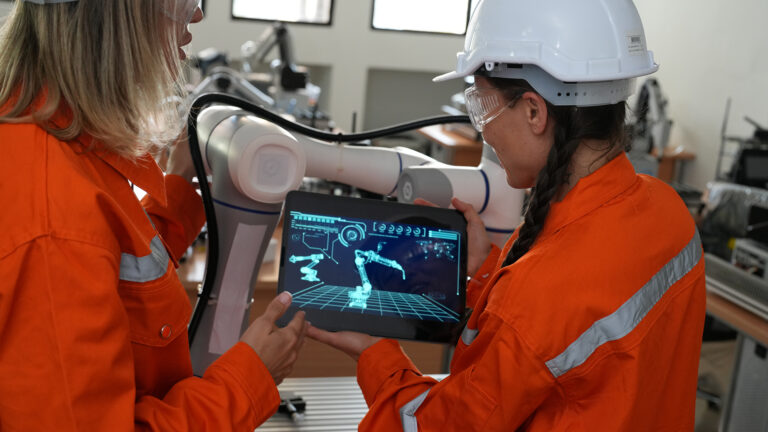MPLS is a type of network that enhances our user experience and allows us to enjoy certain applications (such as those in which we watch audiovisual content) without interruptions. How does it work?
MPLS(Multiprotocol Label Switching) is a data transport mechanism that enables tunnel signaling by using labels to transport information between two points in a network.
By traveling inside these tunnels, our data is more secure and reliable. In addition, because the path is already set up, routers have less work to do to get the packets to their destination. MPLS also improves our experience as users, since it allows applications that require little delay and more bandwidth (how ugly when our serial crashes at that moment!) to have access to it.
This solution was standardized by the Internet Engineering Task Force(IETF), the organization responsible for standardizing Internet protocols. At its origins in the late 1990s and early 2000s, MPLS sought, among other things, to bring the benefits of circuit switching closer to packet-switched networks.
In those years, the speed of packet switching was limited mainly by the router software, which was primarily responsible for the process. Because it helped solve this problem, the protocol was quickly adopted by telecommunications companies.
The problem MPLS solves
Let's imagine that we are a delivery truck driver and we have a shipment to deliver to a city four towns away from our starting point. We don't know the entire route, but we know how to get to the first town on the way there.

In this town, we will take a break and take the opportunity to ask what road we should take to get to our destination. When we stop at a gas station, the friendly attendant tells us that he doesn't know how to get to the town we are going to, but he does know how to get to the next town on the way. So, we go to the next town and ask again, but again the same thing happens.
Finally, we arrive at our destination, only to find that the office to which our package was sent is closed. How frustrating! If only before we left we had found someone who knew the whole route and saved us from stopping in every town....
Let's get back to reality. Traditional layer 3 packet forwarding involves a check of the routing table of each router on a given path. The packet arrives on an interface, the routing table is consulted to see what the next hop should be, according to the destination IP address, and it is routed to it. This is the equivalent of asking how to get to the destination and just figuring out how to get to the next town.
Today, it doesn't seem like a complicated operation, even with a huge number of routing tables and packets flowing through computers. But once upon a time it was, and it was inefficient.
This operation consumed a lot of resources and impacted the ability of the equipment to switch packets at line rate. MPLS initially emerged as a solution to this problem. Thanks to this mechanism, the route to our destination is delimited and avoids having to ask questions in each intermediate town to find out where to go, although we still have to visit them.
Thus, an end-to-end path is signaled using label operations, an additional header that is attached to the packets. In this way, routers can consult simpler label tables than routing tables and execute the indicated operation (placing a new label and changing or removing an existing one). This occurs before the packets begin to circulate. Packet forwarding becomes more like circuit switching in traditional networks, such as telephone networks. As each packet enters the network, it is placed in a "tunnel"; a direct route that takes us to our destination.
Given the speed at which technology advances, the original limitation ceased to exist in a short time. Routers became powerful devices, executing many instructions very fast. Although it was no longer necessary to optimize the forwarding process, MPLS remained in place because many other use cases were found.
Advantages of MPLS over IP protocol
The MPLS mechanism has other advantages over the IP protocol. While the IP protocol is simple and powerful, it has limitations.
Compared to MPLS, one of the main differences is that the variables that come into play when deciding the packet path are very limited.
A traditional routing protocol (RIP, OSPF or IS-IS, to name a few) relies exclusively on metrics (either number of hops or cost) to choose the best possible path. This is independent of the state of the network, and also prevents routers from making use of all the resources available to the network. It does not consider latency, available bandwidth on a link or administrative factors, elements that have become important in view of the new uses of networks, such as streaming or gaming. These require fast responses, almost in real time, and the possibility of these involving large volumes of data traffic.

In a traditional IP network, some links will concentrate most of the traffic and others will be highly underutilized. Through the use of MPLS, it is possible to have greater control over resource utilization, allowing an operator to decide how traffic paths are formed.
Another problem with using IP is that, to serve two different customers, a service provider has to set up two separate infrastructures or require them to use a different addressing scheme, and this is inconvenient. With an MPLS network, an Internet service provider (ISP) can logically separate all of its customers at low cost and with a single network, ensuring data reliability.
A solution suitable for any company
The use of MPLS as a tunneling protocol allows to solve these drawbacks in a simple way, without losing the positive features of traditional IP networks.
At the same time, it lays a foundation on which to add diverse services, with a versatility that can be leveraged by small and medium-sized enterprises as well as large telecommunications service providers.
By:
Andrés Burel, Engineering Leader of Telco & Smart Cities.
Andrés has a degree in Telecommunications Engineering from ORT University (Uruguay). He has more than 10 years of experience in telecommunications and has worked for vendors and service providers.



